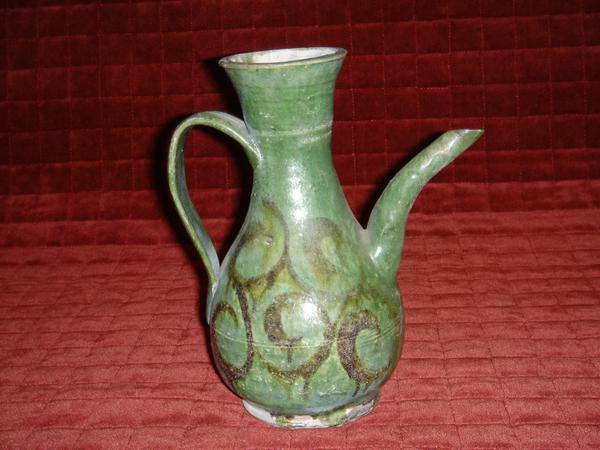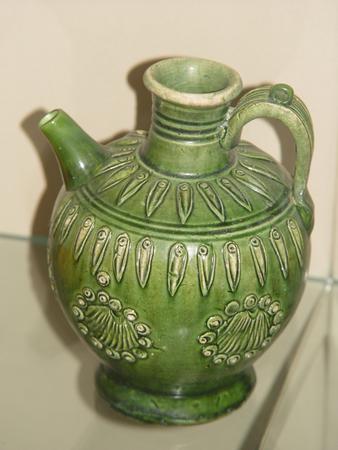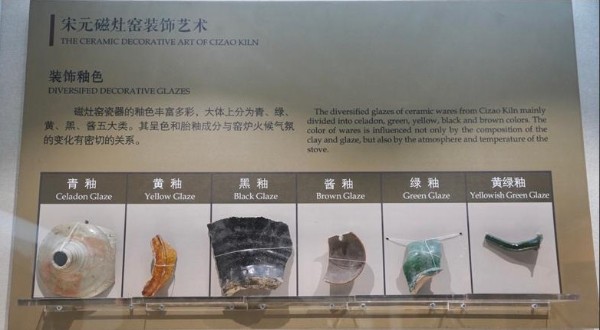福建磁灶窑绿釉执壶
2022-11-23
大英博物馆里有几把绿釉执壶,横跨唐元明叁代,说产地是福建省。
1、元代执壶叁把

Stoneware kendi with caramel-colored iron glaze. Diameter: Diameter: 5 cm; Height: Height: 17.50 cm

Stoneware ewer with green glaze. Diameter: 5 cm; Height: Height: 7.80 cm

Stoneware ewer with underglaze iron-brown painting and green glaze. Diameter: 5 cm; Height: Height: 19.30 cm
原因:A similar example is in the Quanzhou Maritime Museum, Quanzhou, Fujian province.
2、明代的一把。原因如下:
This type of ewer was probably used in a domestic Chinese context for pouring wine and was also sold to customers in South-east Asia where animal-shaped ewers had been popular for some time. Ming ceramics were preserved in Indonesia over the centuries and as late as the end of the Second World War, in 1945, almost identical crayfish ewers were used as ritual objects among the Kelabits and Muruts people of the far uplands in the interior of northern Sarawak, and Kalimantan in Borneo, Indonesia. Such ewers were used there for 'borak' [rice wine] in ceremonies associated with crop fertility and head-hunting. Some of these ewers were later purchased for the Sarawak Museum. Another similar example is in the Hainhofer Cabinet at Upsala, Sweden, which formed part of a collection completed in ad 1628.

There is another ewer in the Dresden Collection which 'can be traced in Saxon hands as far back as the sixteenth century. The presence of similar examples in such early inventoried European collections provides us with a terminus post quem. Since R. L. Hobson's time further research has established that ewers in the form of phoenix or carp were inventoried for the Elector of Saxony in 1590, recorded as a gift in 1579-80 from the Medici Grand Duke of Florence.
An identical example is in the Baur Collection, Geneva, and a further example is in the Lee Kong Chian Art Museum, National University of Singapore. Variations on this type of ewer, with carp in place of the crayfish, are also known, while complete examples of both carp and crayfish ewers are in a private collection in Morotai, Halmahera, Indonesia.
3、唐或辽代(618-1125)的一把:

Ewer. Made of green glazed and applied earthenware.
查网上资料,知道福建泉州磁灶窑,始于南朝,窑火延续了一千五百多年,出产执壶,在宋元时期达到鼎盛:
执壶是磁灶窑的代表性产品,多为饮用器,器型、釉色丰富多样。宋元时期,磁灶窑大量烧造执壶,以盘口执壶为多。初时器型为盘口,短颈,鼓腹,圆筒形,短直流,壶体矮,平底。宋元时器身渐高,施半釉或全釉,长曲流,手柄高过壶口,浅圈足;有喇叭口、撇口、直口,有长颈、短颈,有熘肩、斜肩、圆肩,壶身瓜棱形、扁壶形,鼓腹、扁腹、收腹,假圈足、圈足。元时器型多为玉壶春瓶。明清造型增多。釉色有黄釉、绿釉、青釉、酱釉、黑釉及黄绿釉,也有素胎褐彩等。装饰手法有剔花、贴塑、模印、彩绘等;纹样花卉和龙纹饰一般采用回纹、钱纹、弦纹、云雷纹、卷草纹等。

